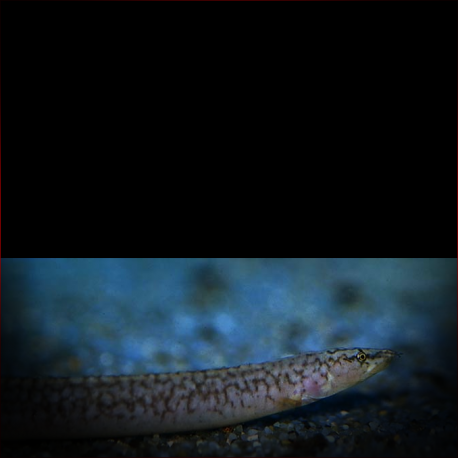More info
Datasheet
| Minimum Tank Size | 250 litres / 66.04 US gallons |
| Maximum Size | 30.0cm / 11.81inches |
| Temperature | 23°C / 73.40°F - 27°C / 80.60°F |
| Hardness | 8-25ºdH |
| pH | 8.0-9.5 |
General Description
The Caecomastacembelus Plagiostomus, belonging to the Mastacembelidae family, is a rare and intriguing addition to aquariums, known for its benthic lifestyle and stiffened dorsal rays. Reaching a maximum size of 30.0cm, it thrives in environments mimicking its natural habitat in Lake Tanganyika.
Aquarium Setup
For this species, a tank of at least 250 litres is necessary, with sand covering the bottom to accommodate its burrowing habits. The setup should include rock piles for shelter and substrate and avoid gravel due to its potential harm to the eel's delicate skin. Strong currents in the tank are not recommended, and the water parameters should be maintained within a hardness of 8-25°dH, pH of 8.0-9.5, and a temperature range of 23-27°C (see table).
Behaviour
Peaceful in nature, the Caecomastacembelus Plagiostomus is compatible with larger tankmates and best suited for Tanganyikan communities. While territorial towards its own species, it requires ample space when kept with multiple individuals to prevent aggression.
Feeding and Diet
In the wild, this eel preys on small fish, but in captivity, it readily accepts various dead alternatives. Suitable food options include prawn, cockle, mussel, earthworms, and bloodworm, providing a diverse diet to meet its nutritional needs.
Reproduction & Dimorphism
Limited information exists regarding the reproduction of this species, but successful breeding has been achieved in aquarium settings. Breeding should occur in a species-specific tank, with adhesive eggs laid in the substrate or on rocks. The fry, initially resembling typical fish fry, develop their elongated body as they mature, requiring infusoria as their first food source. No sexual dimorphism details are currently available.
Habitat and Distribution
Endemic to Lake Tanganyika, the Caecomastacembelus Plagiostomus inhabits rocky areas along the lake's shoreline, typically residing in shallow waters. Its preference for hard, alkaline water makes it a unique yet challenging addition to most freshwater tanks.

